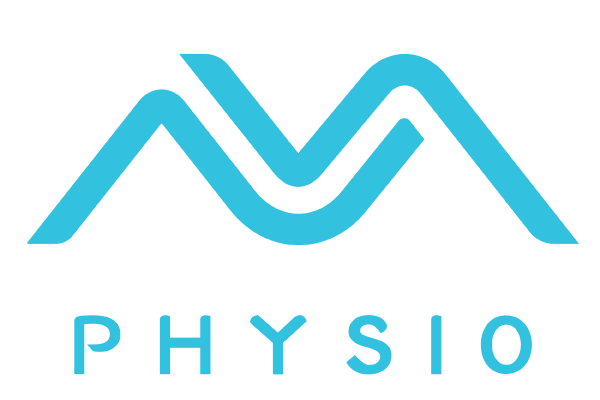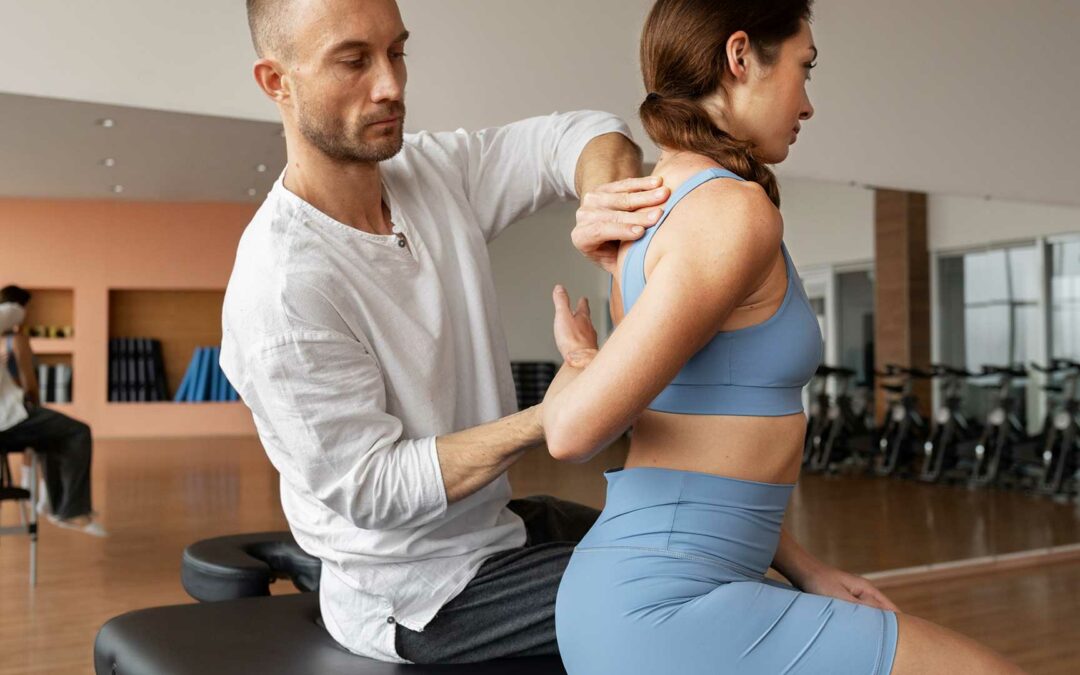Injuries to the shoulder can be debilitating and significantly impact one’s daily activities, especially when they occur unilaterally. Unilateral shoulder injuries, such as rotator cuff tears, shoulder instability, or labral tears, can result from overuse, trauma, or sports-related activities. Understanding the nature of these injuries and following an appropriate rehabilitation program is crucial to ensure a successful recovery and a return to normal function.
What readers will learn from this article:
- Different types and causes of unilateral shoulder injuries
- The importance of assessment and diagnosis in determining the severity of the injury
- Techniques for managing pain and inflammation
- Range of motion and strengthening exercises for shoulder rehabilitation
- The benefits of contralateral hold techniques in unilateral shoulder rehabilitation
- The significance of functional and sports-specific training in the recovery process
- Criteria for returning to sports after a unilateral shoulder injury
- Gradual return to activity and long-term prevention strategies for shoulder health
Understanding Unilateral Shoulder Injuries
Unilateral shoulder injuries encompass a range of conditions that affect only one side of the shoulder joint. One common type of injury is a rotator cuff tear, which involves a tear in one or more of the tendons that make up the rotator cuff. These injuries often occur due to repetitive overhead motions or sudden trauma. Shoulder instability is another prevalent condition where the joint becomes excessively loose and prone to dislocation or subluxation. Labral tears involve damage to the labrum, a ring of cartilage that surrounds the shoulder socket.
To effectively manage and rehabilitate these injuries, it is essential to understand their underlying causes. Overuse injuries, such as rotator cuff tears, often develop gradually over time due to repetitive stress on the shoulder joint. Conversely, traumatic injuries, like labral tears, may occur suddenly as a result of a fall or direct impact to the shoulder. Sports-related activities, especially those involving repetitive or excessive shoulder motions, can also contribute to the development of these injuries. By identifying the specific type and cause of the unilateral shoulder injury, a physiotherapist can tailor the rehabilitation program to address the individual’s unique needs.
Initial Assessment and Diagnosis
Accurate diagnosis plays a vital role in developing an effective rehabilitation plan for unilateral shoulder injuries. A thorough assessment by a physiotherapist is crucial to evaluate the extent of the injury and determine its severity. The assessment typically involves a combination of medical history, physical examination, and diagnostic tests.
During the medical history evaluation, the physiotherapist will inquire about the onset of symptoms, the mechanism of injury, and any prior shoulder problems. This information helps to establish a timeline of the injury and identify any predisposing factors. A physical examination follows, during which the physiotherapist will assess the range of motion, strength, and stability of the injured shoulder. They may also perform specific tests to evaluate the integrity of the rotator cuff or detect signs of shoulder instability.
In some cases, diagnostic tests such as X-rays, magnetic resonance imaging (MRI), or ultrasound may be necessary to obtain a more detailed view of the shoulder structures. These imaging techniques can help identify the presence and extent of tears, dislocations, or other structural abnormalities. By combining the information gathered from the medical history, physical examination, and diagnostic tests, the physiotherapist can make an accurate diagnosis and develop an appropriate treatment plan.
According to a study published in the National Center for Biotechnology Information (NCBI), a comprehensive assessment that includes objective functional tests and predetermined criteria is crucial in determining an athlete’s readiness to return to sport after a shoulder injury[^1]. This study emphasizes the use of objective assessments to minimize reliance on subjective measures and ensure a safe and successful return to sport.
Pain and Inflammation Management
Pain and inflammation are common symptoms experienced in unilateral shoulder injuries. Effectively managing these symptoms is essential to facilitate the healing process and promote functional recovery. Various modalities can be used to alleviate pain and reduce inflammation in the injured shoulder.
One commonly used modality is ice therapy, which involves applying ice packs or cold compresses to the affected area. Cold therapy helps to constrict blood vessels, reduce swelling, and numb the area, providing temporary relief from pain. Heat therapy, such as warm compresses or heat packs, can also be beneficial in promoting blood circulation and soothing tight muscles, but it should be used cautiously in acute inflammatory conditions.
Non-steroidal anti-inflammatory drugs (NSAIDs) may be recommended by a healthcare professional to help manage pain and reduce inflammation. These medications can help alleviate discomfort and reduce swelling, but they should be used under medical guidance and for a limited duration.
Rest is a vital component of pain and inflammation management. It is important to avoid activities that exacerbate pain or further strain the injured shoulder. Adequate rest allows the body to initiate the healing process and prevent further damage.
Physiopedia provides detailed insights into the management of unilateral neglect, an attention disorder that can occur after a stroke or brain injury[^2]. This resource highlights various rehabilitation interventions, including visual exploration training and virtual reality training, which have been shown to be effective in recovering from unilateral neglect.
Range of Motion Exercises
Restoring range of motion in the injured shoulder is a crucial step in the rehabilitation process. Range of motion exercises aim to improve flexibility and restore normal joint movement. These exercises should be performed under the guidance of a qualified physiotherapist to ensure proper technique and avoid further injury.
Pendulum swings are an effective exercise for initiating gentle movement in the shoulder joint. To perform this exercise, stand with the unaffected arm resting on a support surface, such as a table. Lean forward and let the injured arm hang freely. Gently swing the arm in small circles, allowing gravity to facilitate the movement. This exercise helps to lubricate the joint and improve mobility.
Shoulder circles are another beneficial exercise for improving range of motion. Stand with your feet shoulder-width apart and arms at your sides. Slowly raise both arms forward and upward in a circular motion, as if drawing circles with your fingertips. Gradually increase the size of the circles while maintaining a smooth and controlled motion. Perform the exercise in both clockwise and counterclockwise directions to target different muscle groups.
Passive and assisted stretching techniques can also be incorporated to improve flexibility. These exercises involve using an external force, such as a towel or a stretching band, to gently stretch the shoulder joint and surrounding muscles. It is important to start with gentle stretches and gradually increase the intensity to avoid causing further discomfort or injury.
A systematic review published in the National Center for Biotechnology Information (NCBI) provides valuable insights into exercises that produce optimal muscle ratios in the scapular stabilizers[^3]. This review highlights the effectiveness of exercises such as flexion in the prone position and side-lying external rotation for specific muscles.
| Range of Motion Exercises | Strengthening Exercises |
|---|---|
| Pendulum swings | Rotator cuff exercises with resistance bands |
| Shoulder circles | Scapular stabilizer exercises |
| Passive and assisted stretching techniques | Deltoid exercises |
Strengthening Exercises
Strengthening the muscles surrounding the injured shoulder is crucial for restoring stability and preventing future injuries. A comprehensive strengthening program should target specific muscles involved in shoulder stability, such as the rotator cuff muscles, scapular stabilizers, and deltoids.
Rotator cuff strengthening exercises are essential for restoring stability to the shoulder joint. These exercises typically involve resistance bands, dumbbells, or bodyweight movements. Internal and external rotation exercises with a resistance band are effective for targeting the rotator cuff muscles.
Scapular stabilizer exercises are important for improving the stability and control of the shoulder blade. One effective exercise is scapular retractions, which involve squeezing the shoulder blades together while maintaining good posture.
Deltoid exercises, such as shoulder presses or lateral raises, can also be incorporated to strengthen the larger muscles around the shoulder joint.
Physiopedia offers a wealth of information on shoulder pain and dysfunction, emphasizing the importance of the trapezius muscle in shoulder orthopedic problems[^4]. This resource offers insight into the role of the trapezius muscle and provides various treatment options, including exercises, stretching, taping, massage, and trigger point therapy.
Contralateral Hold Techniques
Incorporating contralateral hold techniques into unilateral shoulder rehabilitation can be highly beneficial for enhancing proprioception, stability, and overall recovery. Contralateral hold techniques involve using the unaffected shoulder to provide proprioceptive feedback and support during exercises.
One example of a contralateral hold exercise is the isometric hold. Start by standing or sitting upright with the injured arm positioned at a 90-degree angle. Place the hand of the unaffected arm on the forearm of the injured arm, applying gentle resistance. Engage the muscles of the injured arm and attempt to resist the pressure from the unaffected arm for a few seconds before releasing. Repeat this exercise for multiple sets, gradually increasing the duration of the hold.
Resistance band exercises can also be modified to incorporate contralateral hold techniques. For instance, during external rotation exercises, hold the resistance band with the unaffected arm while performing the exercise with the injured arm.
Including personal anecdotes or case studies can illustrate the effectiveness of the recommended rehabilitation techniques. Providing specific guidelines for the frequency, duration, and progression of exercises would enhance the practicality of the information. Additionally, including visuals, such as images or videos demonstrating the exercises, would make the instructions easier to follow.
Frequently Asked Questions
Question: What is unilateral with contralat hold for shoulder physiotherapy?
Answer: It is a technique that involves using one arm to hold and stabilize the opposite shoulder during exercises.
Question: Who can benefit from unilateral with contralat hold for shoulder physiotherapy?
Answer: Individuals with shoulder injuries or post-surgery patients can benefit from this technique.
Question: How does unilateral with contralat hold help in shoulder physiotherapy?
Answer: It provides stability and support to the injured shoulder, allowing targeted exercises to be performed more effectively.
Question: What exercises can be done with unilateral with contralat hold for shoulder physiotherapy?
Answer: Exercises like shoulder rotations, external rotations, and shoulder raises can be done using this technique.
Question: How often should unilateral with contralat hold for shoulder physiotherapy be done?
Answer: It is recommended to consult with a physiotherapist for a personalized treatment plan, but typically 2-3 times a week is suggested.
Question: Objection: Is unilateral with contralat hold necessary for shoulder physiotherapy?
Answer: While it may not be necessary for everyone, it can provide extra stability and support for individuals with shoulder injuries or weakness.

